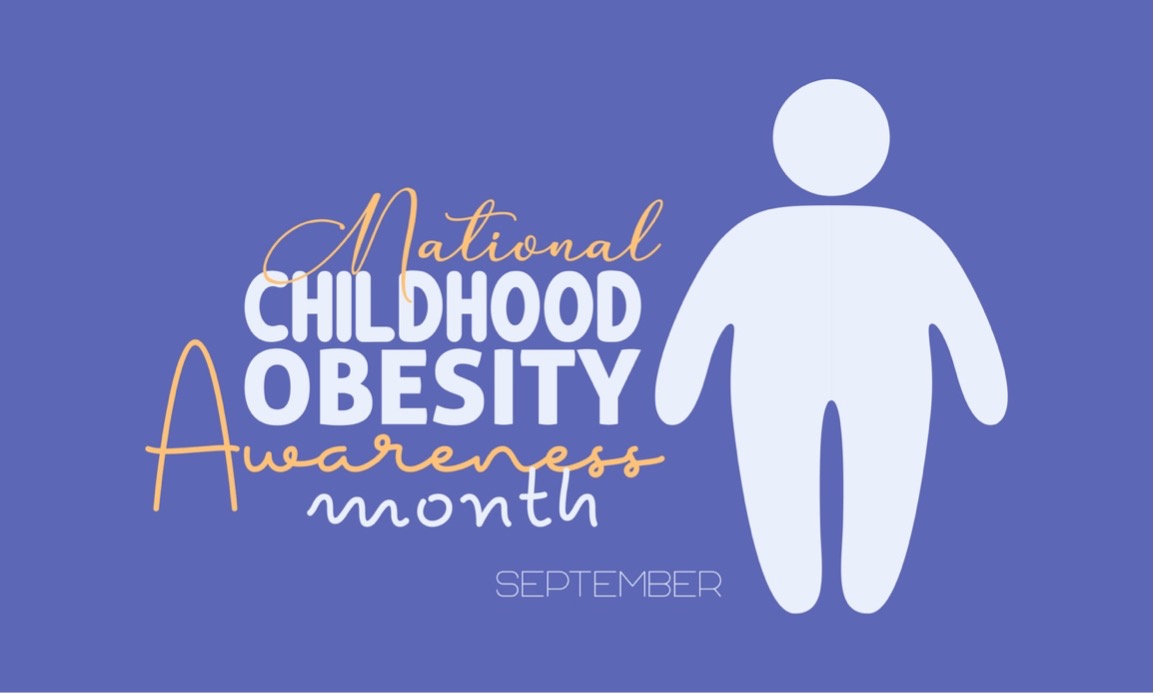
The obesity epidemic continues to dominate headlines. Obesity is a leading cause of heart disease, diabetes, high blood pressure, and stroke, and while many of these conditions occur in adults, they often begin in childhood. This September is National Childhood Obesity Awareness Month. By knowing the facts and taking steps to help your children live a healthier lifestyle, childhood obesity and its resulting complications can be prevented. According to the Centers for Disease Control & Prevention (CDC), one in five school-aged children in the U.S. are overweight or obese. Childhood obesity has more than tripled among children and adolescents since the 1970s. Why have we seen such a dramatic increase? Although genetics play a role, diet, physical activity levels, and other environmental factors all contribute to the rising obesity rates, especially for children as they are beginning to learn and establish life habits while they are young. Children who are overweight or obese have a higher risk for having sleep apnea, asthma, type 2 diabetes, heart disease, and joint problems. The COVID-19 pandemic has only exacerbated childhood obesity rates as it has disrupted children’s access to schools where they had scheduled opportunities for exercise, nutritious meals, and services provided by counselors and school nurses.
As parents and caregivers, you make a significant difference in what your children and the children you care for think and do. You are role models for your family. Eating right and being active can help you maintain a healthy weight. When your kids see you making these choices, there is a good chance that they will do the same. By promoting a balance of food and activity in your family’s life, you can help your family maintain a healthy weight.
What can you do to help your child?
- Offer new fruits and vegetables and encourage your child to take at least three bites.
- Keep the TV and video games out of your child’s bedroom.
- Take a family walk after dinner.
- Encourage your child to drink more water or 16-24 ounces of low-fat milk a day.
- Discuss treatment options with your child’s medical provider if she/he is obese.
Sources
- https://www.cdc.gov/healthyschools/obesity/facts.htm
- https://healthfinder.gov/NHO/SeptemberToolkit.aspx
- https://www.cdc.gov/obesity/childhood/index.html
- https://www.cdc.gov/healthyweight/calories/index.html
Health Center Resources
- Childhood Obesity Information Graphic
- This infographic focuses on what parents can do together with their children to build healthy habits and prevent childhood obesity. Some tips given include being active with examples of what one could do and eating healthily.
- Helping Young Children Thrive: Healthy Practices in the Early Care and Education (ECE) Setting
- This infographic focuses on the importance of Early Care and Education settings to address and combat childhood obesity. This infographic also provides statistics on healthy practices currently and in the future.
- Childhood Obesity
- This page offered by Boston Children’s Hospital provides information about childhood obesity and the way it can be prevented and managed. Additionally, the page also presents some of the research and clinical trials Boston’s Children Hospital has conducted and some programs and services they offer.
- Prevention and Management of Childhood Obesity and its Psychological and Health Comorbidities
- This article discusses the causes of childhood obesity, the treatments available for it, preventative practices, and the side effects of childhood obesity. It also discusses potential times and service contexts for interventions throughout the developmental span.
- Beyond the Data – Preventing Childhood Obesity: Eating Better, Moving More
- In this video Dr. John Iskander and the chief for obesity prevention and control at the Center for Disease Control (CDC), Captain Heidi Blank, discuss childhood obesity and the side effects of it, as well as the importance to intervene during the child’s youth. Captain Heidi Blank also explains steps parents and childcare providers can take to combat childhood obesity.
- Addressing Childhood Obesity Today to Protect the Health of Future Generations
- This video published by the World Health Organization Regional Office for the Western Pacific discusses the problem of childhood obesity and how members of the community, family, and schools can help to ensure children receive proper nutrition and are a healthy weight.
